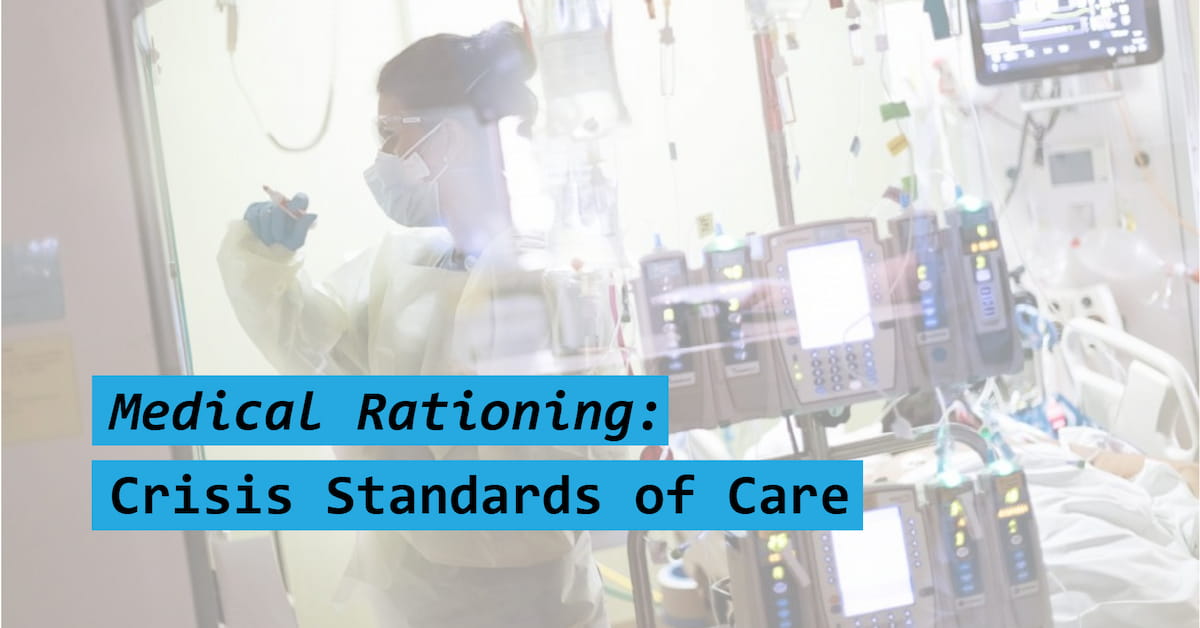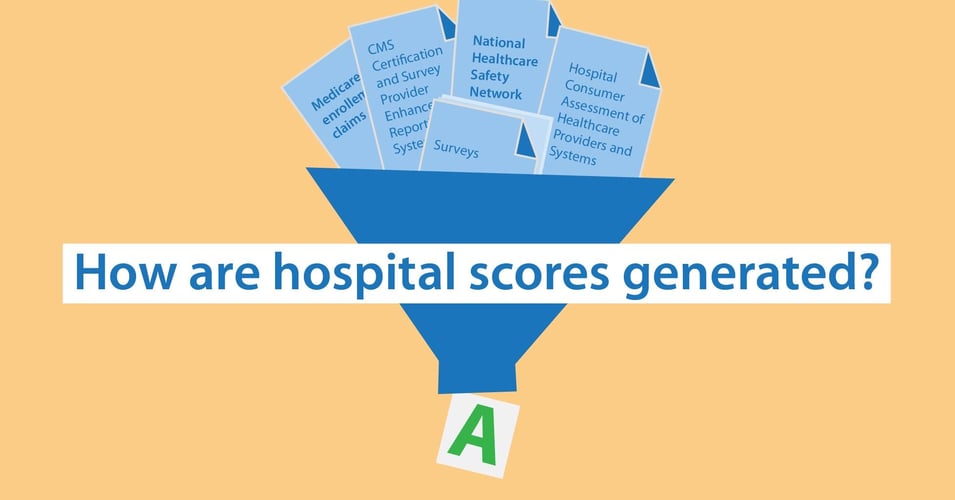Medical Rationing: Crisis Standards of Care

 In a time of crisis, be it a natural disaster, a terrorist attack, or a global pandemic, there must be plans in place to help responders make life-or-death decisions about how to allocate resources. The nation, the states, cities and individual facilities have disaster plans in place to guide decision-making when time is of essence and people are under duress. Health care workers are particularly burdened by these kinds of weighty decisions, with lives of patients in the balance. In today's post, we'll look at the plan that helps them make the hardest decisions imaginable: The Crisis Standards of Care.
In a time of crisis, be it a natural disaster, a terrorist attack, or a global pandemic, there must be plans in place to help responders make life-or-death decisions about how to allocate resources. The nation, the states, cities and individual facilities have disaster plans in place to guide decision-making when time is of essence and people are under duress. Health care workers are particularly burdened by these kinds of weighty decisions, with lives of patients in the balance. In today's post, we'll look at the plan that helps them make the hardest decisions imaginable: The Crisis Standards of Care.
By definition, a crisis is an event with little or no warning, intense response requirements within a short period of time, and finite resources. During crisis response, healthcare resources, including physical materials as well as human resources, are often not in sufficient supply to meet all the needs. These resources include equipment, medicines, patient beds, nursing attention, operating rooms, and even emergency room waiting room chairs. During these stressful times, these resources must be rationed in a logical way to maximize effect and patient outcomes.
To avoid making last-minute decisions and to remove the emotional burden from healthcare workers, many facilities and states have Crisis Standards of Care. Under normal circumstances, standards of care address how patients are treated, from how an emergency room waiting room is used to actual medical procedures. These guidelines are modified during times of crisis to address issues such as who is admitted to the hospital, where to put overflow patients, how often nurses need to check vital signs, who gets surgery, who gets an ICU bed, or who gets access to advanced equipment such as ECMO. Not only do these crisis standards of care help allocate resources effectively, they take the burden of decision-making off the shoulders of healthcare workers and protects them legally for decisions they make during a crisis.
Some states had crisis standards of care before the pandemic, and some created them during the first months of COVID-19. Some individual facilities have their own crisis standards of care. In Idaho, for example, the crisis standards of care address who has priority to hospital care when beds are limited. With the goal of saving the most lives, the patient's medical status is the primary factor, starting with a scoring system that evaluates major organ system function. After that criteria is reviewed, priority is given to patients 17 years old and younger, pregnant women, young adults, older adults, and adults who perform tasks that are vital to the crisis (first responders, for example) or to society (government leadership). In some hard-hit areas, there might even be a blanket Do No Resuscitate order for all patients.
So who does make these life-of-death decisions? Some states have triage committees made up of healthcare workers and medical ethicists. This group creates the crisis standards of care, but also can take calls from healthcare workers who need outside advice on who to select when resources are limited. This committee can quickly review medical records and make the decision for the healthcare worker, using a lottery system if the patients are equal in every other respect. At this time, vaccination status is not being used as a criteria for receiving priority.
Crisis standards of care are not perfect, of course. There is controversy surrounding the use of age as a factor in deciding who gets care. When considering priority, some facilities are measuring not just "lives saved" but "life-years saved." They consider the patient's future years of life, thereby giving younger patients priority. Some facilities might de-prioritize patients with severe dementia or significant physical disability (citing "quality of life" as rationale), thereby opening the door to discrimination. Also, if patients with chronic conditions such as diabetes and hypertension are de-prioritized because they are considered less likely to survive, then that decision disproportionally affects African-Americans, who make up a greater portion of those with these conditions. While guidelines help limit discrimination in medical treatment, there are still areas that need a closer look.
Everyday standards of care emphasize that patients should receive the best possible treatment using best practices. In a crisis, however, some corners must be cut in order to save the most lives. This may mean that people waiting for the emergency room have to wait in their cars if the waiting room is full. It might mean converting classrooms into patient overflow rooms. It might mean giving a cohort of patients half doses of medicines when there is not enough for everyone to have a full does. In some parts of the country right now, medical care is being rationed. Communities are being warned that their medical care will be affected by COVID-19 surges filling up their local hospital. It can be a chilling reminder of the pandemic, and hopefully will encourage us all to do what we can to help avoid crisis. While we work hard to prevent infection outbreaks through risk mitigation - installing biocidal surfaces, wearing PPE, isolating vulnerable patients - there are other forms of prevention that must occur over time to ensure that when we do get hit, we are prepared to handle what comes along with it.
![EOScu Logo - Dark - Outlined [07182023]-01](https://blog.eoscu.com/hubfs/Eoscu_June2024/Images/EOScu%20Logo%20-%20Dark%20-%20Outlined%20%5B07182023%5D-01.svg)




